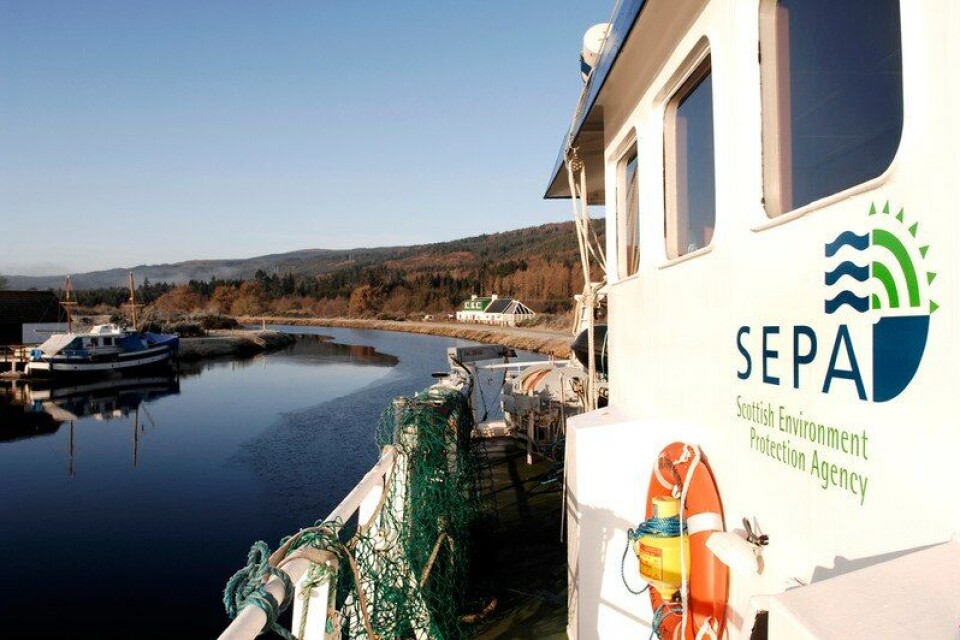
SEPA bids to push aquaculture out to sea
The Scottish Environmental Protection Agency (SEPA) has proposed new rules to bring about what is literally a sea-change in Scottish salmon farming.
SEPA is planning a carrot-and-stick approach to persuade the industry to move further off-shore as it expands.
The agency will remove the maximum biomass limit of 2,500 tonnes per farm site, allowing farms in exposed, deep waters with strong tides to stock more fish.
At the same time, it proposes that seabed monitoring now typically undertaken by fish farmers will instead be regularly carried out by SEPA, which will “advise farmers on what we find so that they can make decisions on the biomass that they can sustainably hold at a site without breaching the seabed standards”.

In its consultation document, Depositional Zone Regulation: A new regulatory method for marine cage fish farms, SEPA adds: “Where farms fail to heed this advice and breach seabed environmental standards, we will consider amending licence conditions and taking appropriate enforcement action.
“In all such cases, further stocking will not be permitted until seabed conditions come back into compliance with the seabed standards and the site is capable of accommodating further waste.”
Waste food
SEPA also plans changes to standards of depositional zones, the area where fish faeces and waste food tend to be deposited on the sea floor beneath and around the cages. While the size of the zone currently varies from farm to farm, SEPA is proposing to standardise the maximum area of seabed that can be affected to 0.5 square km.
Because SEPA is maintaining its cage-edge standard, it says the maximum area of seabed affected by waste deposition at sheltered sites will remain considerably smaller than 0.5km2 at no more than around 0.2km2, limiting the amount of biomass.
Innovative ways of farming
In the forward of the consultation document, SEPA chief executive Terry A’Hearn writes: “Today’s farming techniques release fish faeces; uneaten feed; and used medicines directly into the sea where they can interfere with marine ecosystems. The techniques also leave farms vulnerable to outbreaks of fish diseases that can result in severe losses in fish production.
“To ensure the protection of Scotland’s marine environment, we want to encourage fish farming businesses to find and invest in innovative ways of farming that pose the lowest possible risk to the environment and better safeguard the health of the fish.
“Farming in exposed waters with strong tides is one way that risks of disease and risks to the environment can be reduced."
Exposed waters
He adds: “One step we propose is to regulate in a way that encourages fish farm business to locate production in such exposed waters rather than in more sensitive parts of the marine environment. To support this approach, we are also proposing new, improved arrangements for environmental monitoring around fish farm cages.
“These new arrangements are designed to provide enhanced information so that farm businesses can better manage environmental risks and we can more tightly regulate their activities.”
The consultation closes on August 31. Responses should sent in writing to the following address: Anne Anderson, DZR consultation, Scottish Environment Protection Agency, Strathallan House, The Castle Business Park, Stirling, FK9 4TZ, or by email dzr@sepa.org.uk
Download the full consultation document at: http://bit.ly/2tnR0M7






















































